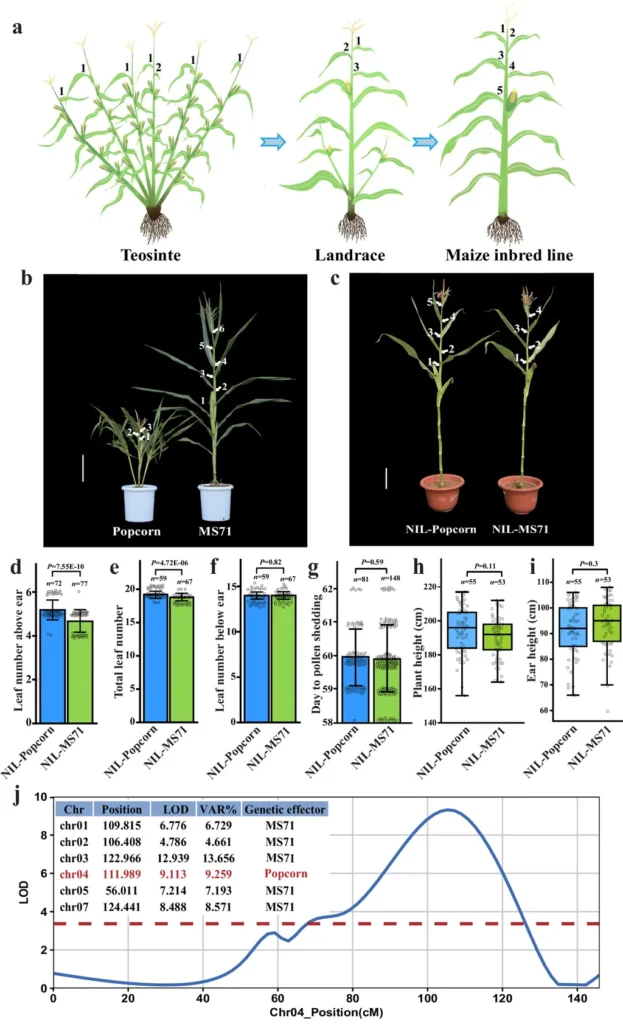In the heart of China’s Jilin province, a team of researchers led by Mo Zhu at the Institute of Agricultural Biotechnology, Jilin Academy of Agricultural Sciences, is unlocking the secrets to more efficient maize production. Their latest study, published in the journal ‘Plants’ (translated from Chinese as ‘Plants’), focuses on the amino acid transporter gene ZmAAP1, offering promising avenues for enhancing nitrogen use efficiency (NUE) in maize—a critical factor for sustainable agriculture and, by extension, the energy sector.
Nitrogen is a vital nutrient for plant growth, but its inefficient use in agriculture has significant environmental and economic costs. “Nitrogen use efficiency remains the primary bottleneck for sustainable maize production,” Zhu explains. The team’s research delves into the functional mechanisms of the ZmAAP1 gene, which plays a crucial role in nitrogen absorption and stress resilience.
Through a systematic evolutionary analysis of 55 maize inbred lines, the researchers discovered that the ZmAAP1 gene family exhibits distinct chromosomal localization and functional domain diversification. This indicates species-specific adaptive evolution, suggesting that understanding these genetic nuances could lead to more targeted and effective breeding strategies.
The study’s integrative analysis of promoter cis-elements and multi-omics data confirmed the root-preferential expression of ZmAAP1 under drought stress, mediated via the ABA-DRE signaling pathway. This finding highlights the gene’s potential role in improving maize resilience to environmental stressors, a critical factor for stable crop yields in the face of climate change.
To validate the biological role of ZmAAP1, the team generated transgenic maize lines expressing the Arabidopsis thaliana AAP1 gene via Agrobacterium-mediated transformation. Three generations of genetic stability screening confirmed the stable genomic integration and root-specific accumulation of the AtAAP1 protein. Field trials demonstrated that low-nitrogen conditions enhanced several transgenic traits, including a 13.5% increase in chlorophyll content and a 7.2% improvement in aboveground biomass. Under high-nitrogen regimes, the gene-pyramided hybrid ZD958 (AAP1 + AAP1) achieved a 12.3% yield advantage over conventional varieties.
These findings reveal ZmAAP1’s dual role in root development and long-distance nitrogen transport, establishing it as a pivotal target for molecular breeding. The research provides actionable genetic resources for enhancing NUE in maize production systems, which could have significant commercial impacts for the energy sector. Efficient nitrogen use in agriculture can reduce the need for synthetic fertilizers, lowering production costs and minimizing environmental pollution.
The study’s implications extend beyond maize, offering insights into the genetic mechanisms of nitrogen use efficiency in other crops. As the global population grows and climate change poses increasing challenges to agriculture, such research is crucial for developing sustainable and resilient crop varieties.
“Our findings reveal ZmAAP1’s dual role in root development and long-distance nitrogen transport, establishing it as a pivotal target for molecular breeding,” Zhu notes. This research not only advances our understanding of plant genetics but also paves the way for innovative agricultural practices that can support food security and energy sustainability.
In the broader context, this study underscores the importance of investing in agricultural research and biotechnology. By harnessing the power of genetic improvement, we can enhance crop productivity, reduce environmental impact, and secure a more sustainable future for agriculture and the energy sector. The research published in ‘Plants’ serves as a testament to the potential of modern agricultural biotechnology to address some of the most pressing challenges of our time.

